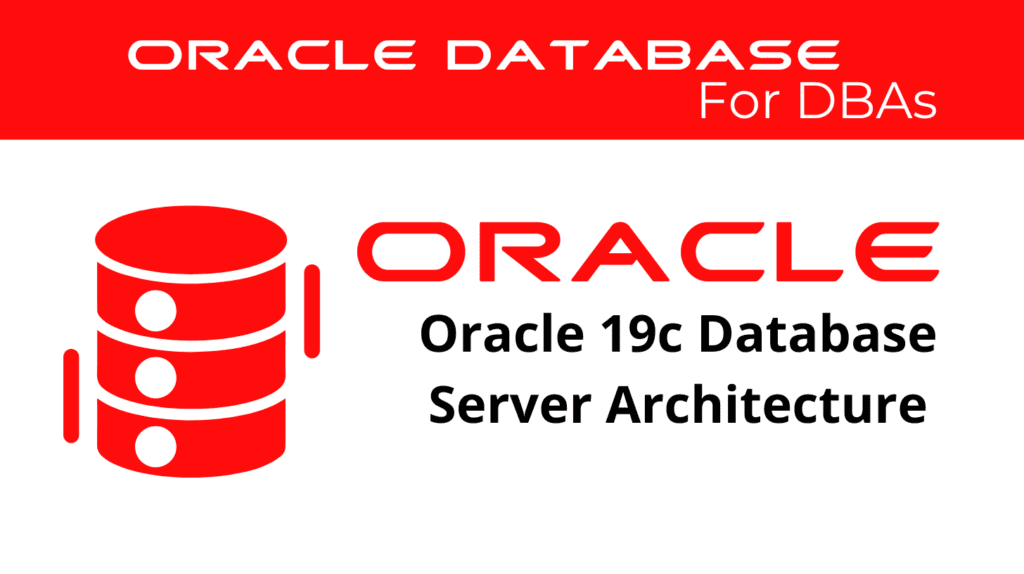
Oracle 19c Database Server Architecture is a comprehensive and sophisticated system designed to handle extensive data management tasks efficiently. Understanding this architecture is crucial for database administrators to optimize performance and ensure data integrity. In this blog, we will explore the main components of Oracle server architecture, their configurations, and best practices for effective management.
Overview of Oracle Server Architecture:
Oracle server architecture consists of various components that work together to manage data effectively. These components include the Oracle Instance, Oracle Database, and various background processes. The Oracle Instance comprises memory structures and background processes that interact with the database. The Oracle Database contains physical structures such as data files, control files, and redo log files.
Understanding the relationship between these components is essential for efficient database management. For example, the Oracle server architecture ensures that data is stored securely and can be accessed quickly when needed. In addition, the architecture allows for scalability and high availability, making it suitable for large-scale enterprise applications.
Key Components of Oracle Server:
The key components of an Oracle server include memory structures, background processes, and physical storage structures. The memory structures, such as the System Global Area (SGA) and Program Global Area (PGA), are crucial for the efficient operation of the database. The SGA is a shared memory region that contains data and control information for one Oracle instance, while the PGA is a memory region that stores data and control information for a single server process.
Background processes, such as the Database Writer (DBWn) and Log Writer (LGWR), handle essential tasks like writing data to disk and logging database changes. The physical storage structures include data files, control files, and redo log files, which store the actual database data and metadata.
Managing these server components effectively is vital for maintaining optimal database performance. Regular monitoring and tuning of memory structures and background processes help ensure that the database operates efficiently under varying workloads.
📢 You might also like: Oracle Database 19c Multitenant Architecture (Category: Oracle Database Admin)
Best Practices for Configuring Oracle:
Implementing best practices for configuring Oracle server architecture is essential for achieving high performance and reliability. One best practice is to allocate memory structures, such as the SGA and PGA, based on the specific workload requirements. This allocation ensures that the database can handle the expected load without performance degradation.
Another important practice is to use Oracle’s Automatic Storage Management (ASM) for managing the physical storage structures. ASM simplifies storage management by automating the distribution of data across available disks, ensuring balanced I/O loads and improved performance.
Additionally, regularly reviewing and adjusting the configuration of server components based on performance metrics can help maintain optimal database performance. Tools like Oracle Enterprise Manager provide valuable insights into database performance and can guide administrators in making necessary adjustments.
Common Challenges and Solutions in Managing Server Architecture:
Managing Oracle server architecture can present several challenges, such as performance bottlenecks and storage management issues. Addressing these challenges requires a thorough understanding of the server components and their interactions.
Performance bottlenecks often result from improper configuration of memory structures or contention between background processes. Regular monitoring and adjustment of these configurations can help mitigate such issues. Additionally, using Oracle’s diagnostic tools and performance tuning guides can help identify and resolve performance bottlenecks effectively.
Storage management issues, such as running out of space in data files or control files, can impact database performance and reliability. Regularly reviewing and resizing these storage structures ensures that the database can accommodate growing data volumes without performance degradation.
See more on Oracle’s website!
Conclusion
In conclusion, understanding and effectively managing Oracle 19c Database Server Architecture is essential for maintaining a robust and high-performing database environment. By following best practices and addressing common challenges, database administrators can optimize the performance and reliability of Oracle databases.
Be Oracle Database certified Professional, this world is full of opportunities for qualified DBAs!





